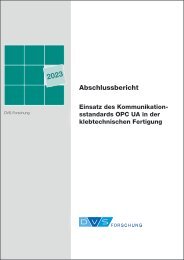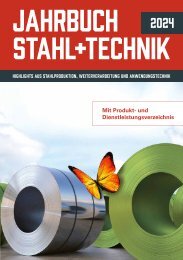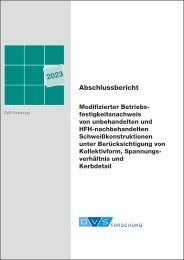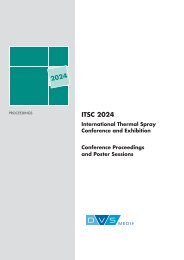Erfolgreiche ePaper selbst erstellen
Machen Sie aus Ihren PDF Publikationen ein blätterbares Flipbook mit unserer einzigartigen Google optimierten e-Paper Software.
the sound field exhibits a complex (though predictable) behavior appearing as strong wave<br />
amplitude variations from one observation point to another. Normally, industrial inspections are<br />
not performed in this region due to the difficulty in interpreting the signals reflected from<br />
discontinuities.<br />
In the far field, the sound has become a standard diverging cone of sound that propagates into the<br />
material being inspected. A continually diverging sound beam allows inspections to be performed<br />
in the far field with predictable results. An example of this is when a distance amplitude curve is<br />
constructed in the far field and is able to accurately reproduce reflected amplitudes from<br />
calibration notches. When focusing is used, the near field is compressed, which results in a<br />
predictable pressure distribution at the focus.<br />
2.2.5 Beam width<br />
The beam width is defined as the spatial extent, or beam cross section of the ultrasonic sound field<br />
in a direction perpendicular to the direction of travel. In general, there will be two beam widths in<br />
the two directions orthogonal to the direction of sound travel. These dimensions are determined<br />
with respect to the two different spatial orientations of the rectangular phased array elements,<br />
which will have separate beam divergence qualities. There are a number of definitions that can be<br />
used to determine the edge of the beam, and one of the more common definitions is a –6 dB<br />
intensity difference compared to the beam maximum. This is also referred to as the FWHM (full<br />
width at half maximum). In materials that are not isotropic, this definition is not correct, as there<br />
can be beam skewing that occurs due to differences in the group and phase velocities. In this case,<br />
the direction of beam travel within the material will not be straight, but will be bent by the<br />
anisotropic grain structure.<br />
A phased array probe can only be focused within the near field length. When focusing, the beam<br />
width is inversely proportional to the ratio of the near field length to focal length. A probe with a<br />
long near field and short focal length will have a sound beam with a small cross-sectional area.<br />
The closer the ratio gets to 1:1, the weaker the focusing behavior (larger sound beam) is for any<br />
given probe. This indicates that it becomes increasingly difficult to obtain a tight focus as the focal<br />
point approaches the end of the near field. Focusing is always a compromise between sensitivity,<br />
beam dimensions, and depth of field.<br />
2.2.6 Depth of field<br />
Depth of field is the distance over which a probe maintains ultrasonic signal strength of a certain<br />
level. In a phased array probe it is determined by the f-value of the virtual probe. F-value is the<br />
ratio of focal length to acoustic aperture. Longer depths of field are observed as the f-value<br />
approaches 1:1. In general, there is a trade off between the sound intensity at the focal point and<br />
the depth of field. With all other parameters being equal, if a probe has a long depth of field then<br />
there will be a lower intensity of sound at the focal point than for a short depth of field. When<br />
focusing is used, the near field is compressed, and results in a predictable pressure distribution at<br />
the focal point.<br />
A probe having a long depth of field is generally more desirable for industrial inspection than a<br />
probe with a short depth of field. This is because probes with a short depth of field lose sensitivity<br />
very rapidly outside the focal point. This can be seen in Figure 2-8 where the sound intensity<br />
11


















